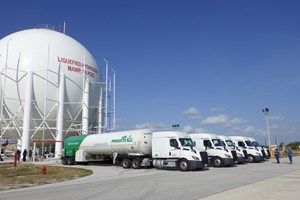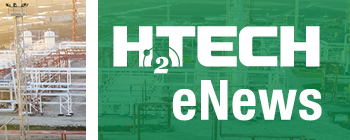News
Air Products completes first liquid H2 fill of world's largest H2 sphere
Air Products announced it has successfully completed the first fill of the world’s largest H2 sphere at the National Aeronautics and Space Administration’s (NASA) Kennedy Space Center located on Merritt Island, Florida. NASA uses liquid H2 combined with liquid oxygen as fuel in cryogenic rocket engines.
To complete the fill, Air Products delivered over 50 trailer loads of liquid H2 – over 730,000 gallons in all - to NASA’s new sphere. The NASA H2 sphere is the world’s largest liquid H2 tank, measuring 90 feet tall and 83 feet in diameter. The H2 will be used to fuel NASA’s Artemis missions, which aims to return humans to the Moon for the first time since the Apollo era and establish the first long-term presence on the Moon.
“Air Products has a long history dating back into the 1950s of working with NASA and stretching from well before the successful Apollo 11 moon landing to more recent missions to study Mars,” said Francesco Maione, Air Products’ President, Americas. “This H2 fill, which is Air Products’ largest ever for NASA, successfully demonstrates our ability to supply world-scale levels of industrial gases safely and reliably through our robust supply chain, so NASA can confidently continue its important work for future missions to the Moon and beyond.”
Air Products’ working relationship with NASA began in 1957. It has included supplying NASA with liquid H2 and other industrial gases to advance the U.S. Space Program including Orion, the Space Shuttle, and Apollo, and reaching all the way back to the earliest Mercury program missions. In addition to supplying product for space launches, Air Products also has had a long-term relationship with NASA’s engine testing program at Stennis Space Center in Mississippi, Johnson Space Center in Texas, as well as Marshall Space Flight Center in Alabama.
Astronautic applications are a key business for Air Products, and the company is also heavily involved in supporting the increasing number of privatized space launches and missions of several independent companies.


